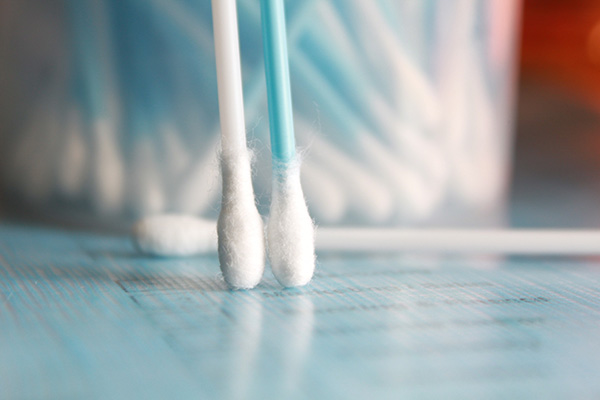
Q-Tips are for ear care, but should not be put into your ear canal. Photo courtesy: Pixabay
As a little girl growing up, I have fond memories of idyllic nights after bath-time spent resting my head in my mother’s lap while she massaged and cleaned my ears. It was so relaxing I would often fall half asleep. Unlike how most people today use a Q-Tip or a warm cloth to clean ears, she used a “mimi-tori” or an ear pick.
In Asia, these ear spoons, as they are also called, are traditionally made from bamboo and in the modern era out of plastic or stainless steel.
Currently use of ear picks to remove wax is discouraged by some health professionals for fear of damaging the ear by accidentally puncturing the ear drum or breaking the auditory ossicles (bones) and causing infections when sharing unsterilized ear picks. So how should we clean our ears?
Earwax or cerumen isn’t really a wax but a sticky liquid secreted by glands in the skin of the outer one-third of the ear canal. It is healthy in normal amounts and serves as a self-cleaning agent with protective, lubricating, and antibacterial properties by trapping outside materials like dirt particles, dust and bacteria.
Appearance ranges from whitish-grey to honey yellow/brown to dark brown in colour and consistency varies from dry, flakes to a moist and wet chunks.
It has a slight odour and is bitter in taste due to its chemical composition.
But it shouldn’t be a foul or offensive smell. That would indicate a possible infection, hygiene issue or more seriously a cholesteatoma. Excessive earwax buildup can lead to ear discomfort, itching, partial loss of hearing and ear canal blockage. Not having any earwax is not good either as this can result in dry, itchy unprotected ears.
Most of the time the ear canals clean themselves. Old earwax is moved, by the chewing jaw action, from the ear canal to the ear opening where it dries, flakes, and falls out. The ear is a delicate organ and can be easily damaged.
It is recommended that you never insert anything into the inner ear canal.
This can push the wax farther in and compact it especially for those with wet tarry wax build-up. Simply wash the external ear with a wash cloth and wipe off any excess wax residue. For ease of removal, wax can be pre-softened by placing a few drops of natural oil (mineral, baby, almond, olive) into the ear before cleaning. You can also use a commercially prepared irrigation kit to flush out stubborn ear wax. Water or a saline solution warmed to body temperature to prevent dizziness is used to flush out the ear canal. Caution is advised to avoid having your ears irrigated if you have narrow eardrums, a perforated eardrum, tube in the eardrum, diabetes, or a weakened immune system. Never use products that were made for irrigating the teeth or mouth as they are too strong and powerful
— Dangerous Treatments —
Ear Candling, also called ear coning or thermal-auricular therapy, is an alternative treatment, where a fabric hollow tube that’s been soaked in wax or paraffin is inserted in the ear canal and set aflame for an hour. Medical research has shown that the practice is both dangerous and ineffective and does not help remove earwax or toxins. Risks include burns to the ear and face and a punctured eardrum. The Food and Drug Administration (FDA) warns consumers that these products may not be safe.
— When to see your Doctor —
If the home treatments discussed are not effective or if the wax has accumulated so much that it blocks the ear canal (and hearing), you experience tinnitus, have itching, odour, discharge or coughing see a physician. An otolaryngologist may prescribe eardrops designed to soften the wax, remove the wax using suction, special instruments, and a microscope to magnify the ear canal. If you have repetitive ear wax issues, you might want to look into allergies, food sensitivities or intolerances as the culprit for your excessive ear wax build-up.
— Interesting Info —
A gene associated with underarm odour, called ABCC11, is related to the color and texture of earwax and race.
If you are Native American or East Asian descent, you will likely have dry, white, and flaky earwax and less body odour. If you are of European or African descent you will likely have wet, sticky, and yellowish-brown earwax and more body odour.
***
Dr. Ailin Oishi-Stamatiou, BSc Hons, DC, is a licensed and registered chiropractor who practices in Leaside, Toronto. She is bilingual in Japanese and English. More info at: www.droishi.com






































